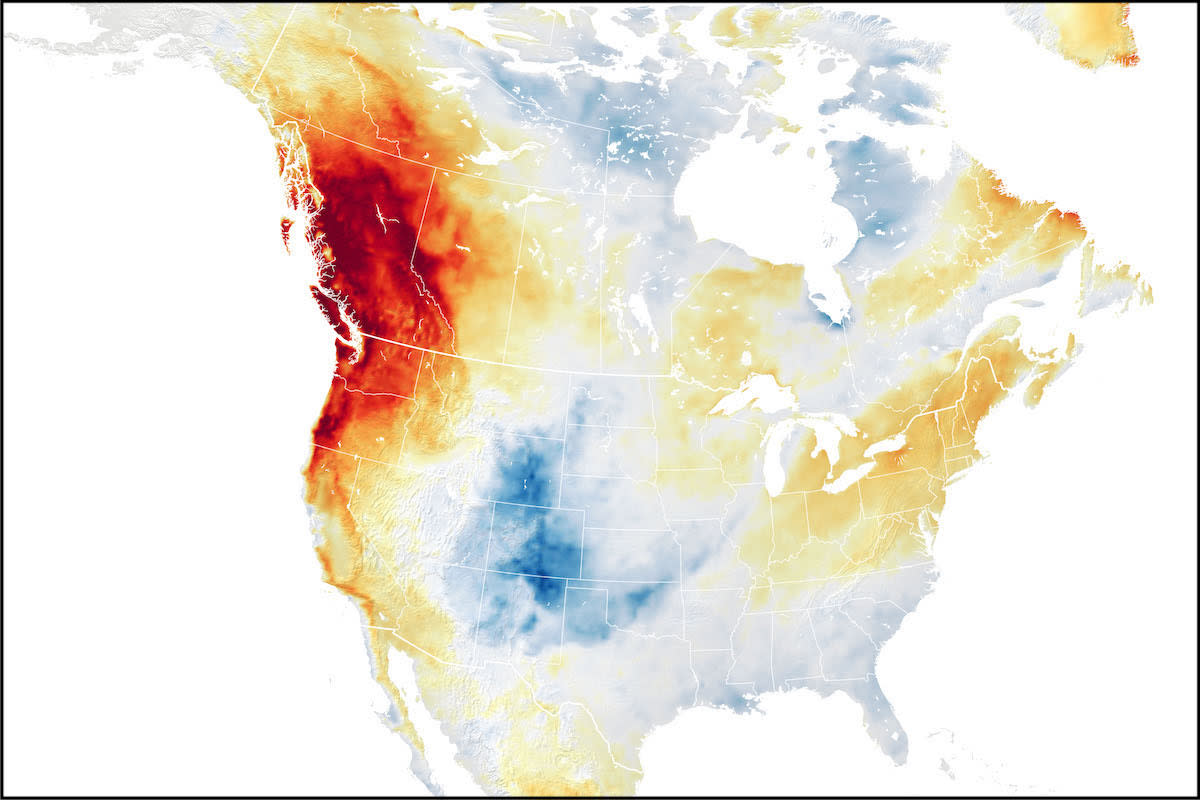Climate Change Intensified 2021 Pacific Northwest Heat Wave, Study Finds

Climate change made the disastrous 2021 heat wave in the Pacific Northwest larger and longer-lasting than it would have been otherwise, a new study finds.
From June 18 to July 14 of 2021, high pressure trapped heat over the region, forming a “heat dome.” For 27 days, the mercury regularly surpassed 100 degrees F (38 degrees C), at one point reaching 121.3 degrees F (49.6 degrees C) in British Columbia, the hottest temperature ever recorded in Canada. In total, the heat wave killed more than 1,400 people in the U.S. and Canada.
Prior research has shown that global warming made the 2021 heat dome 150 times more likely. The new study, published in Communications Earth and Environment, found the heat dome was also 34 percent larger and lasted 59 percent longer as a result of climate change.
The study further found that the heat dome fueled fires that burned an area larger than West Virginia. Authors warn that climate change “will continue to magnify heat dome events, increase fire danger, and enable extreme synchronous wildfire in forested areas of North America.”
ALSO ON YALE E360
Despite Official Vote, the Evidence of the Anthropocene Is Clear

